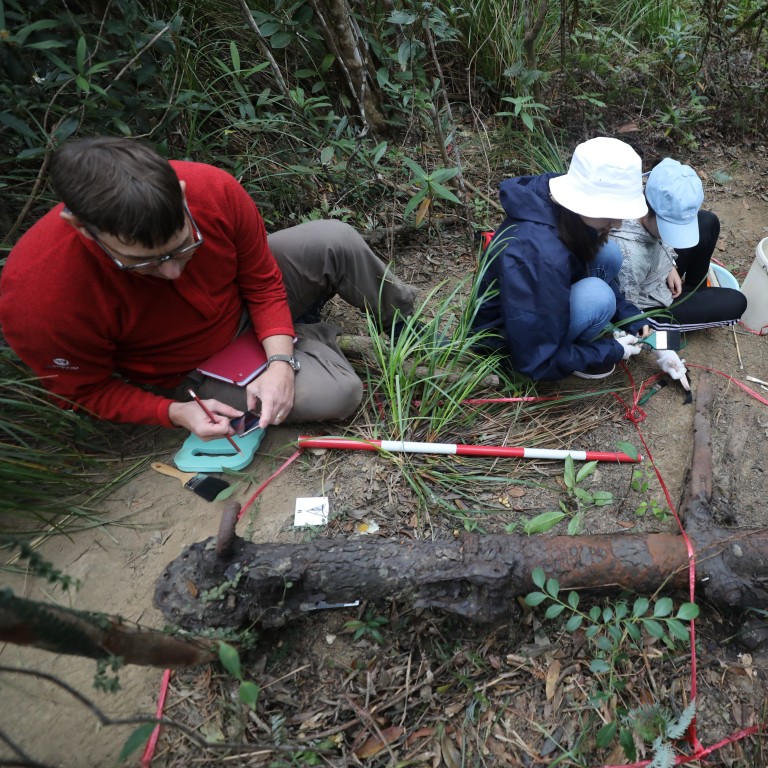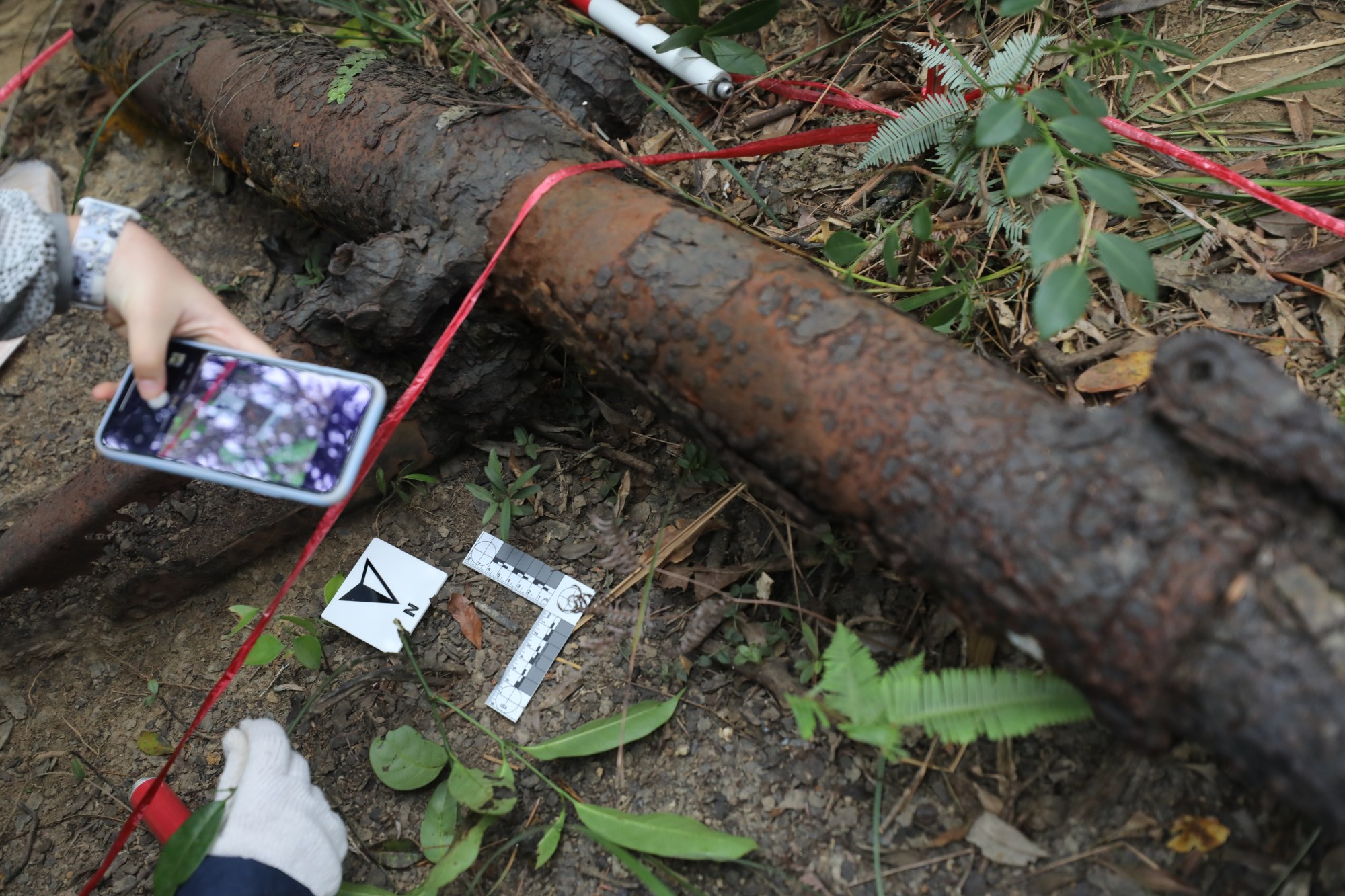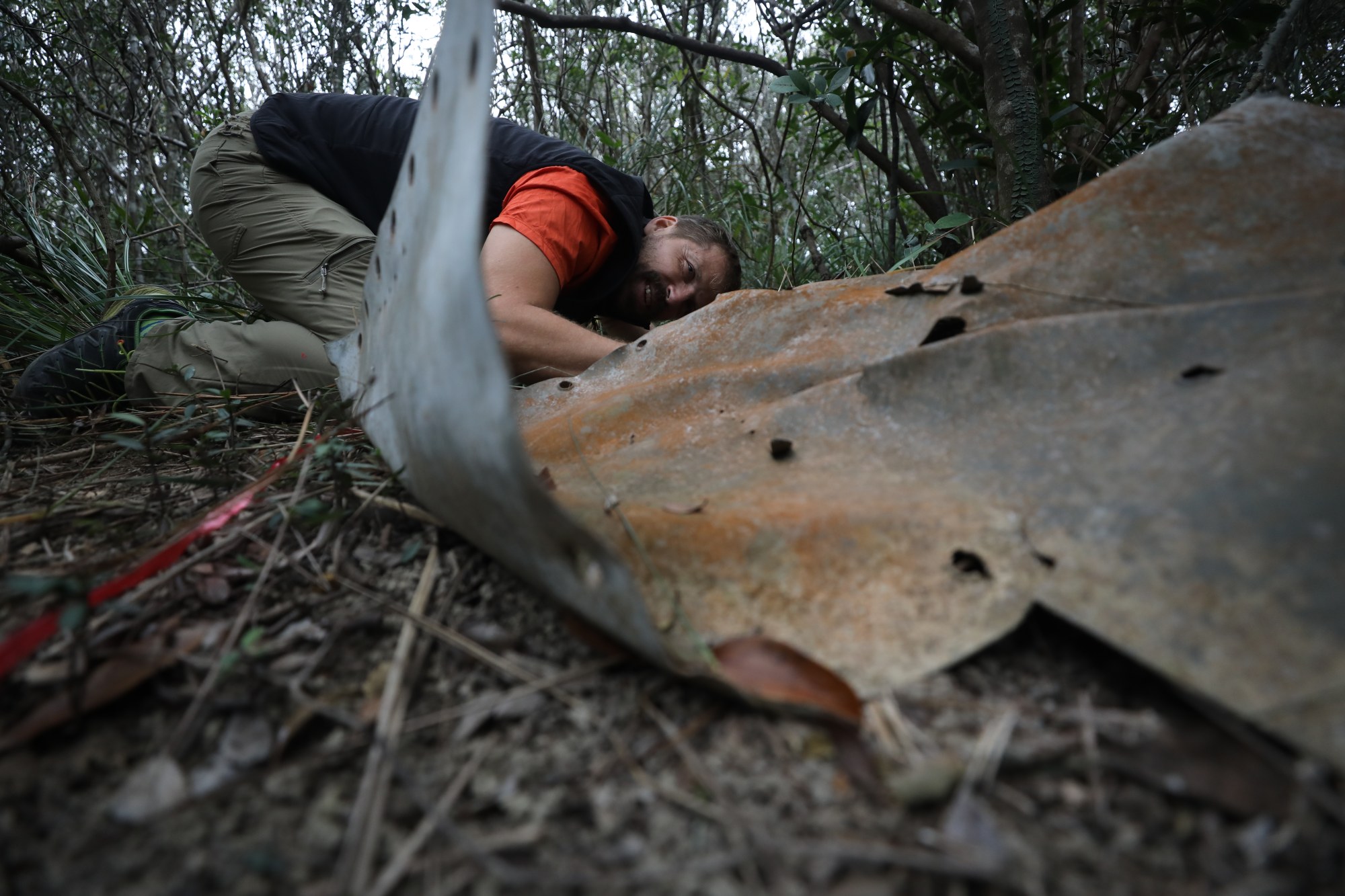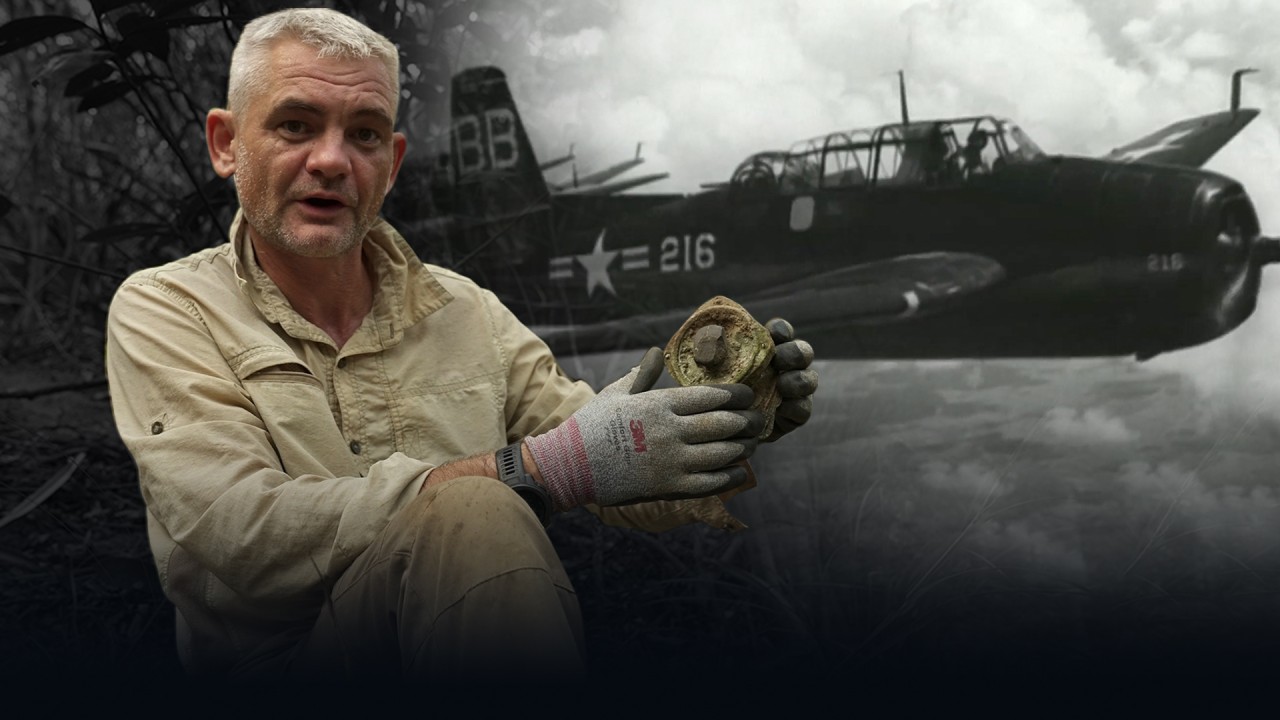
Hong Kong country park could be site of crashed US warplane from World War II, international researchers ‘strongly believe’
- 250 volunteers help to recover more than 600 fragments from possible US TBM-1C Avenger aircraft that crashed in 1945
- Amateur historian who stumbled on wreckage spent 10 years campaigning for search to verify its origins
An international team of archaeologists and forensics experts have said they “strongly believe” that aircraft wreckage found at Tai Tam Country Park is from a US warplane that crashed during World War II.
With the help of 250 volunteers over the course of 12 days, the team uncovered more than 600 fragments, including bits of nails and screws, at the country park last month, said archaeologist Michael B.C. Rivera, a researcher at the University of Hong Kong (HKU).
Pleased with what they found, he told the Post: “It’s way beyond my expectations.”
Significant finds from the site include a two-metre portion of the aircraft’s landing mechanism, part of a propeller and a section of the fuselage.

The team also discovered faded markings on some fragments that could be serial numbers and will be used to confirm if the remains are that of a US TBM-1C Avenger aircraft.
About 80 items were taken away for further investigations.
The team said they would submit an article to a military archaeology journal early next year detailing their efforts to identify the aircraft. A peer review of the paper could help confirm the origins of the wreckage.
The plane is thought to have crashed during the final months of the second world war, with three airmen on board.
Japan occupied Hong Kong from December 1941 until August 1945. After America joined the war, the US Navy started launching aerial attacks on the city in October 1942.
During Operation Gratitude, a two-day blitz of more than 400 sorties, the Americans attacked Hong Kong’s airbase and port on January 15 and 16, 1945.
Hong Kong’s ‘most violent day’: team to dig for shot WWII plane
Seventeen US planes were lost during the second day, with some historians previously calling it one of the most violent days in Hong Kong’s history.
Among the destroyed aircraft were two Avenger warplanes that collided in mid-air over Tai Tam Valley while evading heavy anti-aircraft fire by the Japanese.
It was not until 2011 that local amateur historian Craig Mitchell stumbled on what he believed to be one of the plane’s crash sites, hidden under vegetation on a steep hill.
He spent the next 10 years campaigning for funds, applying for permits and getting experts together to carry out the topsoil investigation, which started last month after being delayed by the Covid-19 pandemic.
The research team included experts from HKU, Polytechnic University, Baptist University and Chinese University, who recorded and photographed everything they found.
US aviation archaeologists William Belcher and Andrew Pietruszka, who could not come to Hong Kong, took part remotely by reviewing images taken by the team and three-dimensional models produced by PolyU.
Pietruszka, who has experience in excavating more than 10 Avenger planes, said that the historical and archaeological interest lay more in the event than the aircraft itself, but the wreckage offered a window into the past.
The recovered pieces found last month matched that of a TBM-1C Avenger aircraft, he added.

The Poly U team, led by Wallace Lai Wai-lok, associate head of the department of land surveying and geo-informatics, made use of data from the government’s Light Detection and Ranging (LiDAR) survey to create a digital model of the hill and locate any potential wreckage.
He said that the latest LiDAR technology could help save time and effort in locating possible wreckage sites, in addition to hidden Japanese bunkers and British formation lines.
Before leaving the site, the team erected a plaque in memory of three American airmen, Richard L. Hunt, Eugene W. Barrow and Louis Bill Gahran, who investigators said they believed crashed there.
The team said they planned to do more public engagement in 2022 by sharing their work with Hong Kong schools, universities and the wider community.
Battle of Hong Kong frontline volunteer lived to tell his stories
Winsome Lee Hin-shin, the project’s site operations manager and a forensic anthropologist, said the findings were significant.
“We hope our discovery can provide an updated version of history,” she said. “Although the plane wreckage was discovered by chance, we also want to find out more about the story behind it.”
Rivera said that pupils during a secondary school talk about the project were thrilled to see what the team had found and had wished to volunteer for future projects.
“This is the kind of impact our outreach can have,” he said. “You really do hope that people, especially young people, get excited by this and know that being interested in history, science or archaeology is an option for them.”


